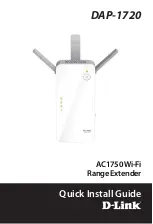
Cisco Aironet Series 1700/2700/3700 Access Point Deployment Guide
Cisco Aironet Series 3700 Access Point
Figure 6
Identifying APs Physically
Feature Module Support
AP 3700 and AP 3600 have integrated support for option modules. The goal in supporting a modular design is to offer a product
that can provide longevity and true flexibility as technology changes. This provides a real value protection for customers. It
also provides Cisco with an opportunity to introduce new features and functionality into a current stable platform.
The Wireless Security and Spread Spectrum Intelligence (WSSI) module adds new functionality to the AP to future-proof
customers' investment. This module provides a dedicated monitor radio to scan the full spectrum (not just the channel on which
the AP is operating). It will offload complete monitoring and security services to the monitor module including CleanAir,
WIDS/WIPS, Context-aware Location, Rogue Detection, and Radio Resource Management (RRM). This module allows for
full spectrum analysis on all channels on both the 2.4 and 5 GHz bands.
Having a WSSI module avoids having the need to deploy a separate, dedicated overlay network for full spectrum monitoring
and eliminates the need for an extra cable pull and additional infrastructure costs (
Figure 7
).
There is also an option module for the AP 3600 that provides 802.11ac (Wave-1) functionality. This option cannot be used on
the AP 3700 because it already has 802.11ac (Wave-1) integrated. This option module for the AP 3600 will operate at 5GHz
and allow the AP 3600 to fully support 802.11a/n along with 802.11ac clients. Wave-1 functionality supports a 1.3 Gbps PHY
/ ~1 Gbps MAC (throughput) using 3 spatial streams, 80 MHz, and 256 QAM. The option module does not support ClientLink
2.0 but rather supports the Explicit beamforming specification that is part of the 802.11ac standard.
Look out for additional modules for 3/4G support and 802.11ac Wave-2.
Use of option modules may require local power supply, Cisco power injector, .3at PoE+, or the use of Cisco Enhanced PoE, as
the module typically increases the power draw to greater than 15.4 W (.3af).
Note
Cisco Enhanced PoE was created by Cisco and is the forerunner to 802.3at PoE+.






































